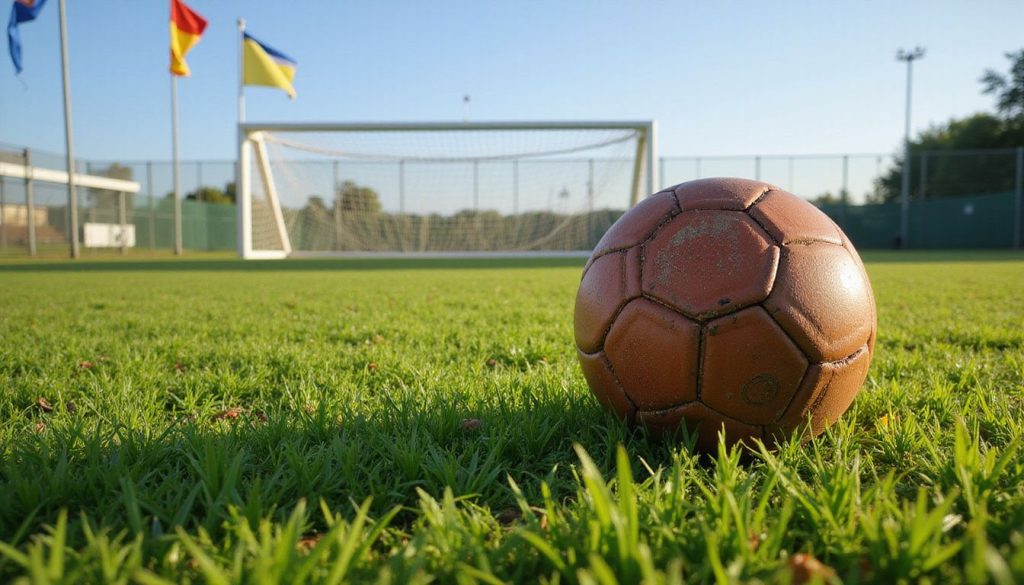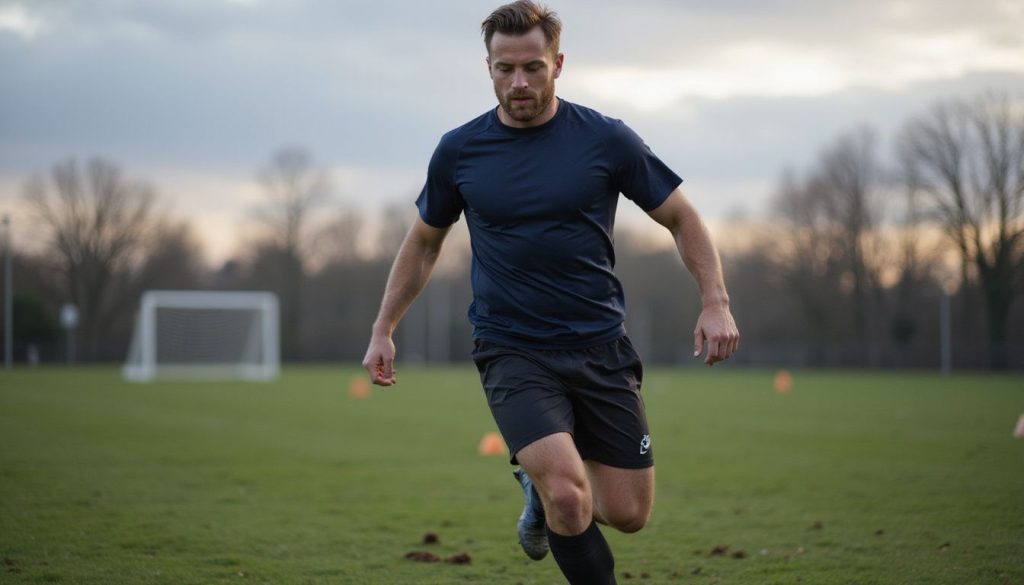Soccer Sprint Workout Routine
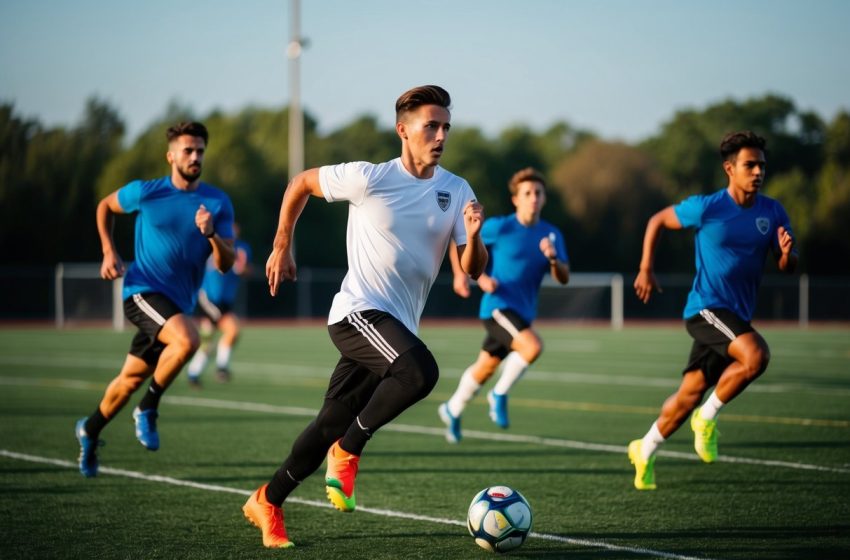
Soccer Sprint Workout Routine: Boost Your Speed and Agility on the Field
If you want to get faster on the soccer field, building a solid soccer sprint workout routine is the way to go. A good routine helps you accelerate quickly, chase down every ball, and beat your opponents to key plays. Sprinting in soccer is different from just running; it combines short bursts of speed with lots of quick stops and starts.
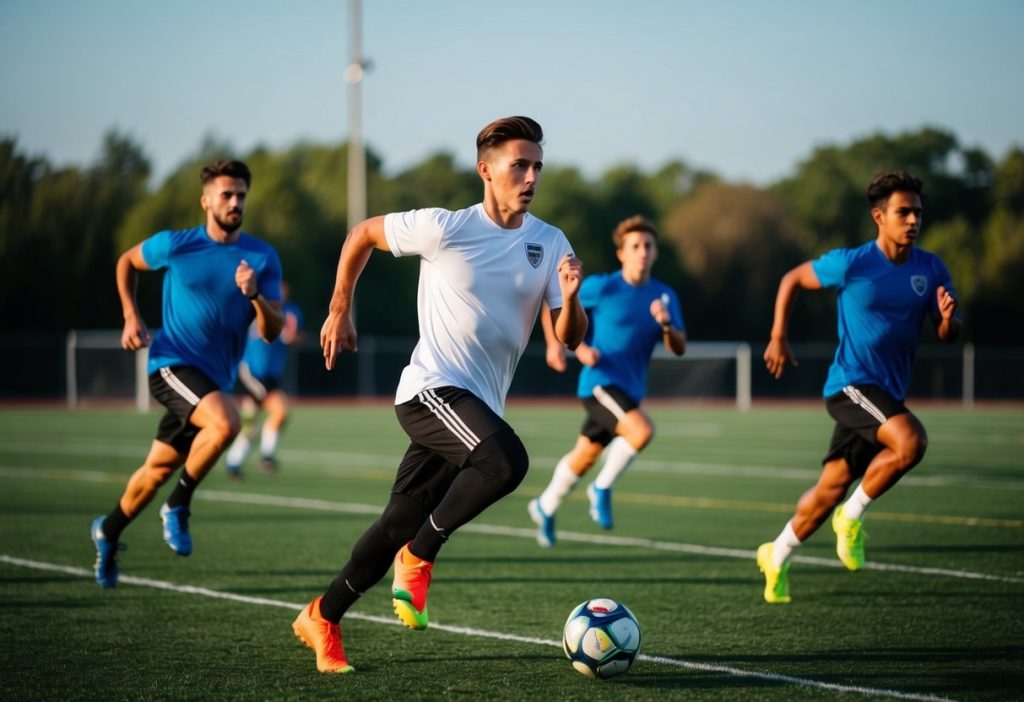
You don’t need fancy equipment or a big field to improve your speed. With simple sprint drills and focused effort, you can boost your power and stamina over time. Practicing the right exercises will help you get stronger, move quicker, and keep competing at your best through every match.
Benefits of Soccer Sprint Workouts
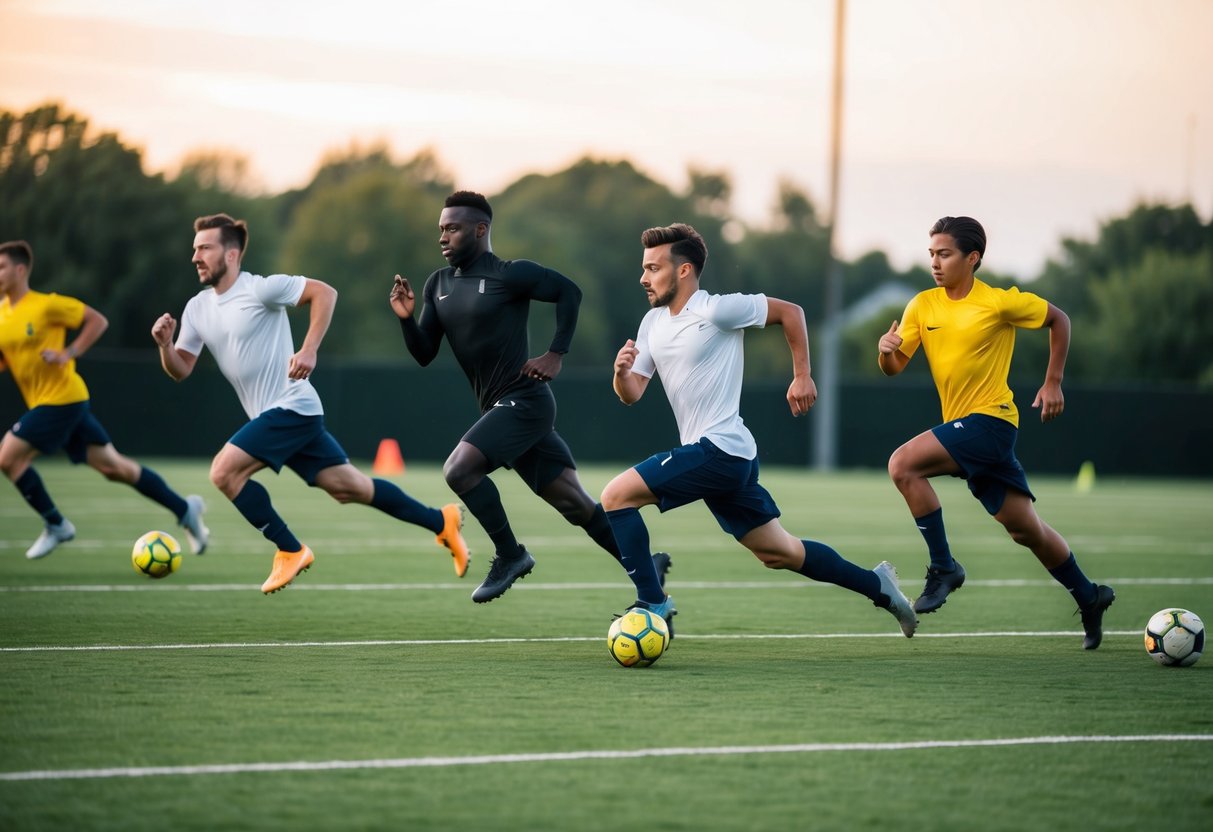
Soccer sprint workouts lead to quicker movements, better conditioning, and a lower chance of injury. By training with purpose, you can develop skills that help you move faster and play stronger in each game.
Enhanced Speed and Acceleration
You need to move fast on the soccer field. Sprint workouts help you run at your top speed and change direction quickly. This is important, because most soccer runs last just a few seconds and often happen during key moments in a match.
Short sprints, track starts, and shuttle drills build your leg muscles and train your nervous system. Over time, your body learns to react faster and push off harder with each step. This extra pop in your movement lets you outrun opponents and reach the ball first.
Here’s how sprint training improves speed and acceleration:
- Stronger leg muscles for powerful pushes
- Better reaction time for taking off from a standstill
- Sharpened skills for quick turns and changes in direction
Boosted On-Field Performance
Soccer is not just about running fast but about performing well during high-intensity moments. Sprint workouts help you handle repeated bursts of movement, so you have more energy left when it matters—like making a last-minute sprint or defending against a breakaway.
Interval sprints and soccer-specific drills test your heart and lungs. With regular sprint training, your cardiovascular fitness increases, which means you won’t get tired as easily. Mentally, you get used to pushing yourself during tough times on the field.
Key benefits for your performance include:
- More stamina for lasting through the whole match
- Quicker recovery between sprints and plays
- Improved focus during stressful game situations
Injury Prevention Benefits
When you sprint, you build not just speed but also strong muscles, tendons, and joints. This strength helps protect you from common soccer injuries, like pulled hamstrings or strained muscles. Sprint drills can also highlight weak spots that might need extra care.
Better conditioning means your body is ready for sudden stops and starts. Well-planned sprint routines help you move safely and protect against overuse injuries. By training correctly, you teach your body good movement patterns and make injuries less likely.
Tips to lower injury risk with sprint training:
- Warm up well with light jogs and stretches
- Use good form during sprints
- Rest and recover between sessions for muscle repair
Core Principles of Sprint Training for Soccer
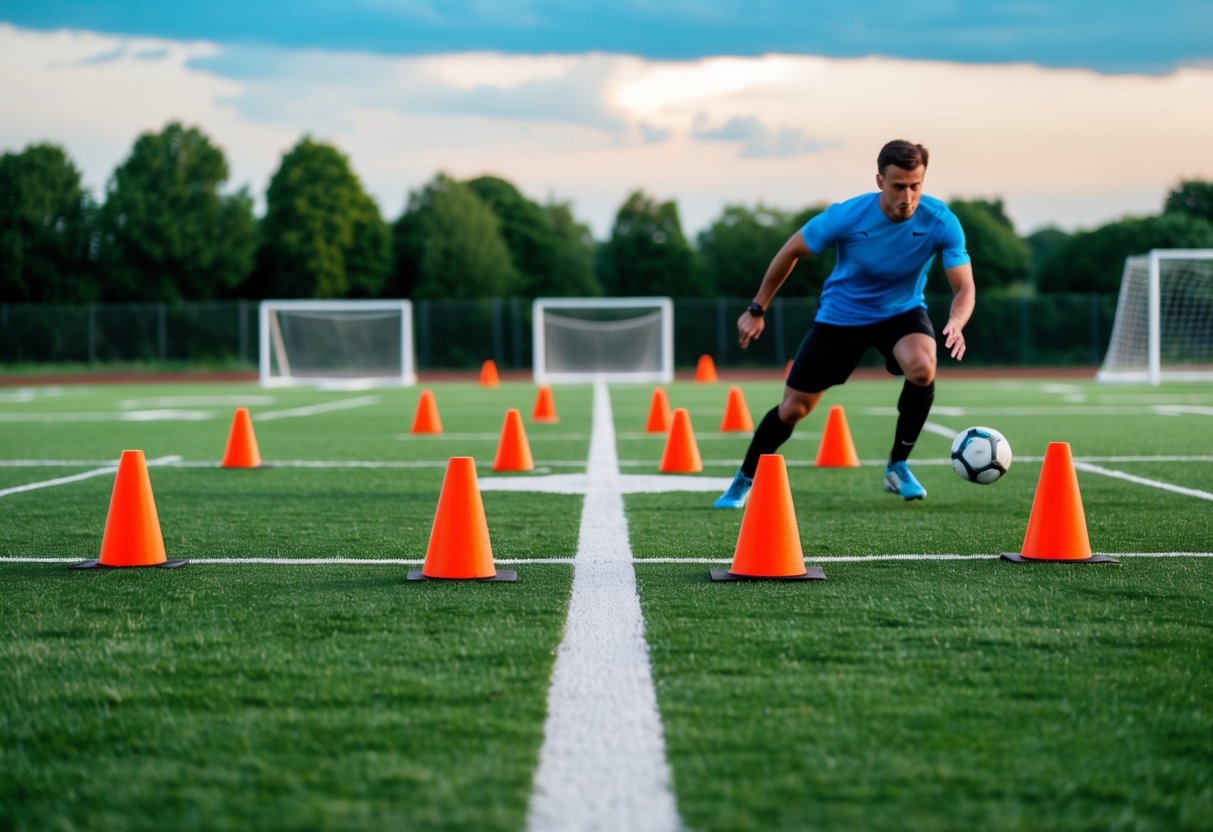
A good sprint training routine for soccer should help you run faster, change direction quickly, and stay balanced during intense games. Focusing on how you run, how well you turn, and how sharp your footwork is can make a big difference.
Running Mechanics
Your running form has a big impact on both speed and injury risk. When starting a sprint, you should lean forward slightly, drive your knees up, and pump your arms. Try keeping your head still and look ahead, not at your feet.
Good posture matters for quick acceleration. Focus on short, powerful steps at first, then open up your stride as you gain speed. Use your toes to push off and land on the balls of your feet.
Drills like high knees, butt kicks, and skips help reinforce correct running mechanics. These exercises build muscle memory so your body uses the proper movement during matches, which helps you move faster and more efficiently.
Change of Direction Drills
Soccer is not just about running straight. You need to stop, start, and change direction quickly to keep up with the game. Change of direction drills build strength in your legs and hips, while also improving your reaction time.
Common drills include the “T-drill,” cone zig-zags, and shuttle sprints. These drills teach you to lower your center of gravity, plant your foot, and push off in a new direction. Practicing this helps you stay balanced and recover quickly from sharp turns.
Try adding rest between sprints so you can focus on max speed and quality movement. Start slow, then add game-like changes in direction to prepare for real match situations.
Agility Applications
Agility training is more than just running fast—it’s about making sharp movements with control. This includes sudden stops, jumps, spins, and side steps you often use during football matches.
Setting up ladder drills or small hurdle hops improves your ability to move your feet fast and stay light on your toes. Drills like “box drills” or quick reaction exercises can help build coordination and balance.
To build soccer-specific agility, combine sprint bursts with quick changes in direction while focusing on keeping your head up so you can see the play unfold. Practicing these skills will help you respond to the ball and opponents more effectively during games.
Structuring Your Soccer Sprint Workout Routine
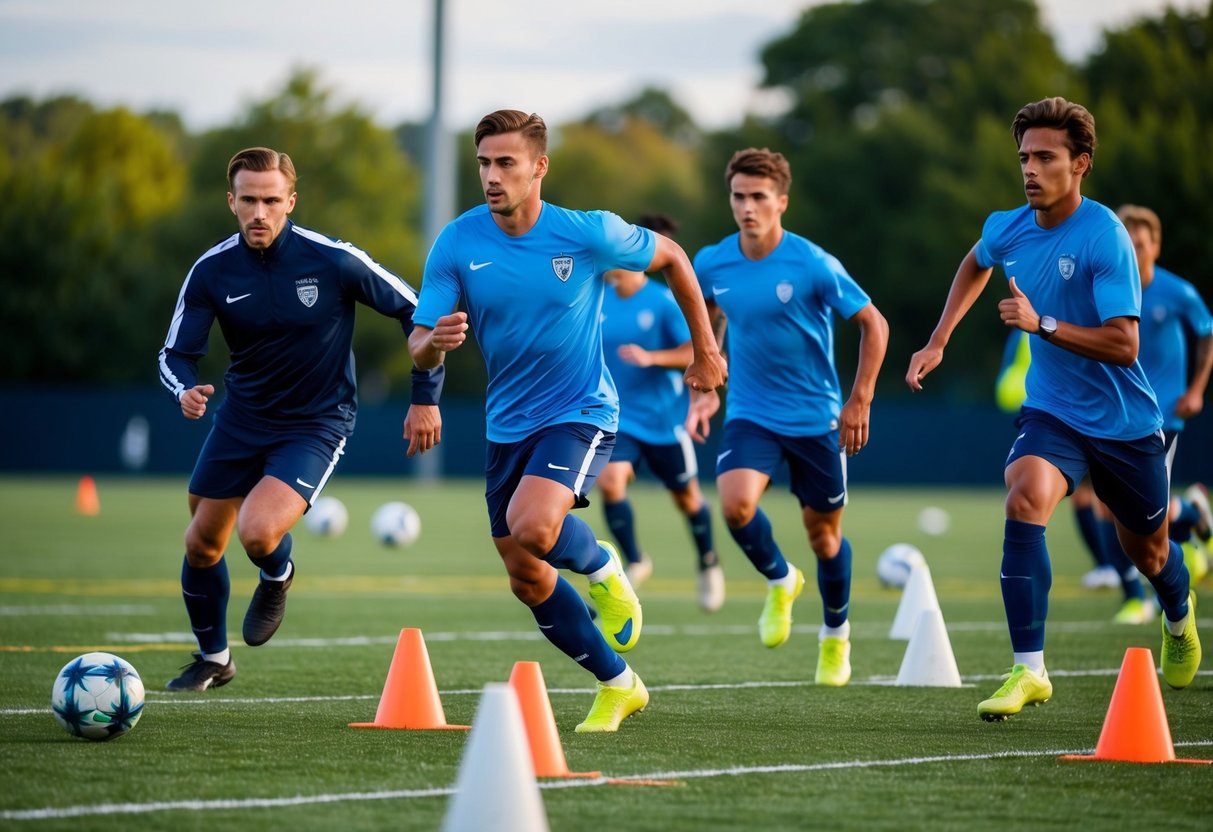
A good soccer sprint workout routine helps you build speed, stay explosive, and lower your risk of injury. It uses smart planning, proper drills, and the right amount of rest.
Warm-Up and Preparation
Start with dynamic stretches to prepare your muscles for high-speed movement. Spend at least 10 minutes moving through exercises like high-knees, butt-kicks, and skipping drills. This gets your body warm and improves your reaction time.
Use cones or small balls for simple footwork between sprints. Weave between them for quick direction changes. Try adding short accelerations out of each drill to fire up your muscles.
Finish your warm-up with a few practice sprints at about half speed. This helps your body feel ready for the real workout ahead.
Sprint Interval Formats
Plan your sprints in short and sharp intervals. One common session is 6 x 10 meter sprints, resting fully in between. As you get stronger, increase the distance and number of reps. For example, switch to 6 x 15 meter sprints or add more sets.
Set up cones to mark your sprint start and end points. If you want to mimic real soccer moves, add dribbling with a ball or quick cuts around cones before your sprints.
Try mixing up your workouts. Sprinting from a standing start builds power, while starting with a jog improves real-game speed. Change the interval format every few weeks to avoid a plateau.
Optimal Recovery Between Sprints
Rest is not just waiting; it’s letting your muscles recover so you can give full effort each sprint. For short sprints (10–15 meters), give yourself at least 60–90 seconds of rest between each sprint.
Active recovery is better than standing still. Walk slowly back to the starting point, breathe deeply, and shake out your legs to cut down on stiffness.
If you don’t recover fully, your form breaks down and your risk of injury goes up. Track how you feel—if you’re still tired or your heart rate is high, add more time before the next sprint. Quality is more important than quantity.
Essential Exercises and Drills
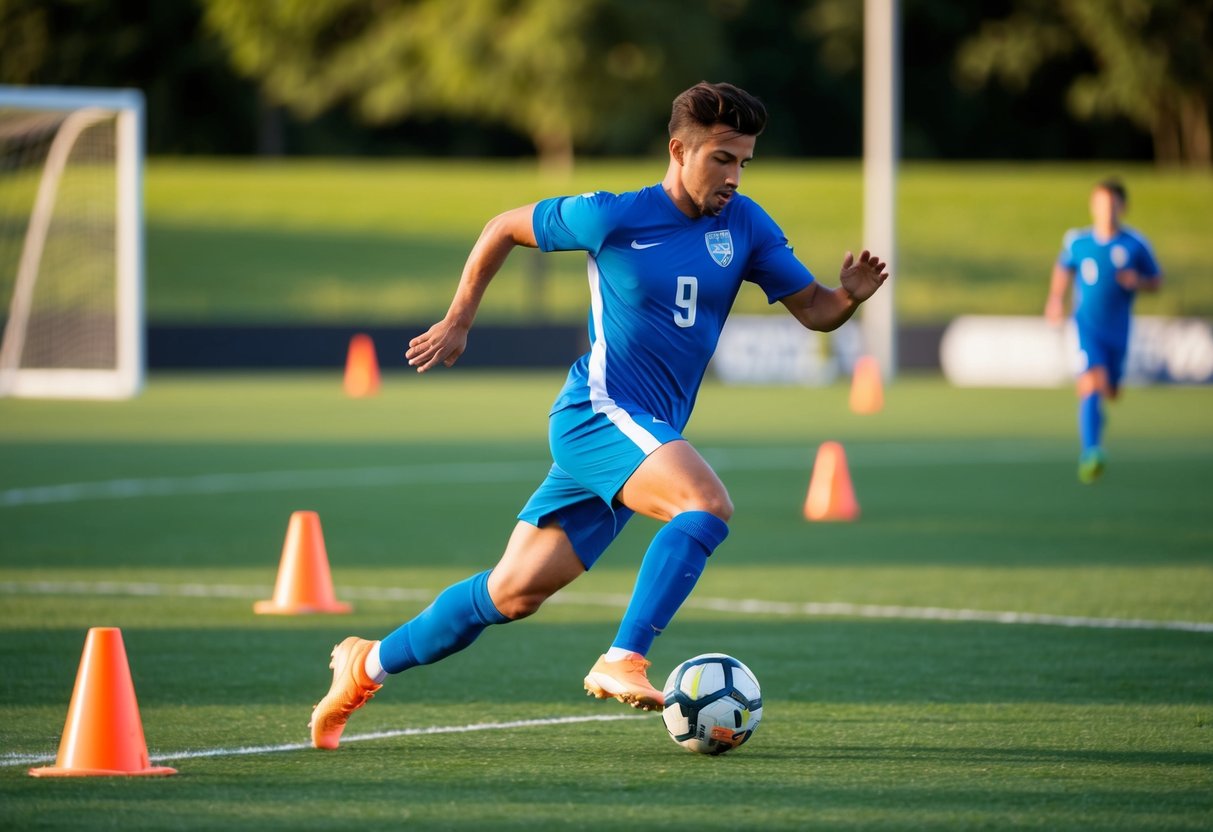
Building sprint speed for soccer is more than just running fast. It takes focused drills, strength training, and explosive movement practice to get quicker and improve your game.
On-Field Sprint Drills
On-field sprint drills help you develop both speed and agility. Drills like cone sprints, shuttle runs, and ladder drills train your legs to move faster and help you react quickly during a match.
A simple drill to try is the 3-cone drill:
- Place three cones in a straight line, with 5–10 yards between each.
- Sprint from the first to the second cone.
- Backpedal to the starting cone.
- Sprint forward, then finish with a side shuffle back again.
These drills also improve your change of direction, making you more effective in one-on-one situations. Try mixing forward sprints with side shuffles and short jogs back to build endurance.
Strength Training for Speed
Strength training supports faster sprinting by building powerful leg muscles. Focus on exercises that use your own body weight and free weights.
Key exercises:
- Squats
- Lunges
- Calf raises
- Deadlifts
- Hamstring curls
Aim for 2–3 sets of 8–12 reps for each move. Stronger legs give you a better push-off every time you sprint. Don’t forget core workouts like planks, since a strong core keeps your running form balanced and stable.
Tip: Rest at least one minute between sets to let your muscles recover. This helps you get stronger over time without injury.
RDL and Plyometric Movements
The Romanian Deadlift (RDL) is essential for soccer sprint workouts. It targets your hamstrings and glutes, both needed for speed. Keep your back straight, bend slightly at the knees, and lift with control.
Why RDL matters:
- Strengthens the muscles that drive each sprint
- Supports balance and stability
- Lowers your risk for hamstring injuries
Add plyometric moves, like box jumps, squat jumps, and bounding. These explosive movements train your legs to react quickly and push off harder with every step. Try doing 3 sets of 6–10 reps, focusing on high effort with each jump for best results.
Sample Soccer Sprint Fitness Program
A smart soccer sprint workout blends short bursts of speed with endurance training to help you last longer and move faster in games. Finding the right balance each week is key for staying fit and avoiding overtraining.
Weekly Training Schedule
Your weekly sprint routine should have 2 to 3 focused sprint workouts. On these days, mix high-intensity sprints with active recovery. For example:
| Day | Activity |
|---|---|
| Monday | Sprint workout |
| Wednesday | Endurance run/Active rest |
| Friday | Sprint workout |
| Saturday | Game or scrimmage |
A typical workout looks like this:
- Warm-up: Light jog (5-10 min), followed by dynamic stretches.
- Main sets:
- 20 x 15-yard sprints (jog back after each).
- 3 x 30-second shuttle runs with 90 seconds rest.
- Cool-down: Walk and stretching.
This schedule helps build speed and power but leaves enough rest to avoid injury.
Balancing Sprinting with Endurance Runs
Sprinting trains quick reactions, speed, and explosive movements. However, soccer requires you to repeat sprints and also keep running for a whole match, much like a 5k. If you train only sprints, you risk tiring out too quickly.
Balance your week by adding one or two longer runs. For example, a 2-mile steady run at a moderate pace works your heart and lungs. Tempo runs or intervals, like 4 x 400 meters at fast pace, can also help.
Rest days or light activity like cycling let your muscles recover. Combining sprints with longer runs gives you both speed and the stamina to perform throughout the match. This approach supports all-around soccer fitness.
Frequently Asked Questions
Training for speed in soccer means focusing on drills that increase your quickness with the ball, improve your overall running mechanics, and help you accelerate in different directions. Youth players need age-appropriate activities. Many exercises and routines can be done at home, using only basic equipment.
What are effective drills for improving speed with the ball in soccer?
Dribbling at speed is crucial. Try quickly dribbling between cones spaced 5 yards apart, focusing on keeping the ball close.
You can also practice “there-and-back” sprints while dribbling. Sprint with the ball to a marker, turn quickly, and sprint back. This helps with control when changing direction.
How can I design a sprint workout routine for youth soccer players?
For young players, start with short sprints, such as 6 sets of 25-yard runs. Allow 2-3 minutes rest after each set.
Include fun games like relay races or tag to keep kids engaged. Mix sprint drills with basic ball work to develop both speed and soccer skills.
What are some soccer speed drills that can be done at home?
You don’t need a field for every drill. Use a small area for cone zig-zags, short sprints from one wall to another, or standing starts from different positions.
Dribble around chairs or any safe objects for quick footwork. Try shuttle runs or “quick feet” ladder work to build speed.
Which exercises are recommended for soccer players to boost sprinting speed?
Squats, lunges, and calf raises help build the leg strength needed for faster sprints. Jumping exercises like box jumps or skipping also improve explosive power.
Hill sprints or repeated short sprints outside are useful. Mix these with agility drills that make you change direction quickly.
How do you structure a sprint training session for soccer athletes?
Begin with a proper warmup, using jogging and dynamic stretches. Next, complete 4 to 8 sets of sprints, each lasting 15 to 30 meters.
Rest fully between sets—usually 2 to 3 minutes—so you can run each sprint at top speed. Finish the session with some light dribbling or cool-down stretches.
Can you suggest any free resources for soccer sprint training routines?
You can find free sprint training drills on websites like YouTube, Reddit, and soccer coaching blogs. Some training sites offer printable plans and videos explaining each exercise.
Many soccer forums and community sports websites also post routines and tips shared by coaches and players.


